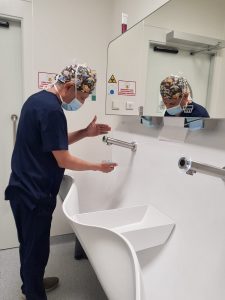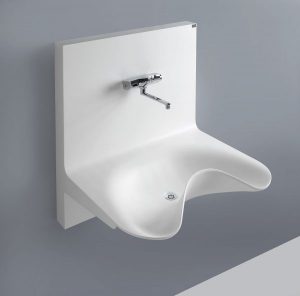 The results of a study published on March 28, 2024, titled, “Epidemiology of Healthcare-Associated Pseudomonas aeruginosa in Intensive Care Units: Are Sink Drains to Blame?” in the Journal of Hospital Infection provide valuable insights into the prevalence and transmission dynamics of Pseudomonas aeruginosa (PA) infections within intensive care units (ICUs). The study was authored by Cheryl Volling, Laura Mataseje, Lucía Graña-Miraglia, Xiaoyi Hu, Sofia Anceva-Sami, Brenda L. Coleman, Mark Downing, Susy Hota, Alainna J. Jamal, Jennie Johnstone, Kevin Katz, Jerome A. Leis, Angel Li, Vinaya Mahesh, Roberto Melano, Matthew Muller, Sarah Nayani, Samir Patel, Aimee Paterson, Mare Pejkovska, Daniel Ricciuto, Asfia Sultana, Tamara Vikulova, Zoe Zhong, Allison McGeer, David S. Guttman, and Michael R. Mulvey.
The results of a study published on March 28, 2024, titled, “Epidemiology of Healthcare-Associated Pseudomonas aeruginosa in Intensive Care Units: Are Sink Drains to Blame?” in the Journal of Hospital Infection provide valuable insights into the prevalence and transmission dynamics of Pseudomonas aeruginosa (PA) infections within intensive care units (ICUs). The study was authored by Cheryl Volling, Laura Mataseje, Lucía Graña-Miraglia, Xiaoyi Hu, Sofia Anceva-Sami, Brenda L. Coleman, Mark Downing, Susy Hota, Alainna J. Jamal, Jennie Johnstone, Kevin Katz, Jerome A. Leis, Angel Li, Vinaya Mahesh, Roberto Melano, Matthew Muller, Sarah Nayani, Samir Patel, Aimee Paterson, Mare Pejkovska, Daniel Ricciuto, Asfia Sultana, Tamara Vikulova, Zoe Zhong, Allison McGeer, David S. Guttman, and Michael R. Mulvey.
 The study investigated the epidemiology of PA healthcare-associated infections (PA-HAI) in ICUs in Ontario, Canada, focusing on the potential role of sink drains in transmission. Utilizing a prospective cohort design, the researchers collected PA clinical isolates, screened for antimicrobial resistance, and sampled sink drains, air, and faucets. Whole genome sequencing was employed to analyze PA isolates.
The study investigated the epidemiology of PA healthcare-associated infections (PA-HAI) in ICUs in Ontario, Canada, focusing on the potential role of sink drains in transmission. Utilizing a prospective cohort design, the researchers collected PA clinical isolates, screened for antimicrobial resistance, and sampled sink drains, air, and faucets. Whole genome sequencing was employed to analyze PA isolates.
PA-HAI was defined according to criteria from the US National Healthcare Safety Network, with ICU-acquired PA infections identified as those occurring more than 48 hours after ICU admission in patients initially testing negative for PA colonization. Sink-to-patient transmission of PA was characterized by ICU-acquired PA infections sharing a close genomic relationship with PA isolates previously recovered from sinks within the patient’s vicinity.
Over a ten-month period, the study documented 72 cases of PA-HAI among 60 out of 4,263 admissions, with a rate of 2.40 cases per 1000 patient-ICU days. Notably, nearly half of all PA-HAI cases were attributed to ICU-acquired infections, and 6.9% were associated with sink-to-patient transmission.
These findings highlight the significant proportion of PA infections acquired within ICUs, with sink drains identified as potential reservoirs for healthcare-associated infections. The study underscores the importance of considering environmental sources, such as sinks, in infection prevention strategies within healthcare settings.
The Full Article is Available on the Journal of Hospital Infection Click Here
To Learn More about preventing Back Contamination in Sinks watch our New Video Click Here

